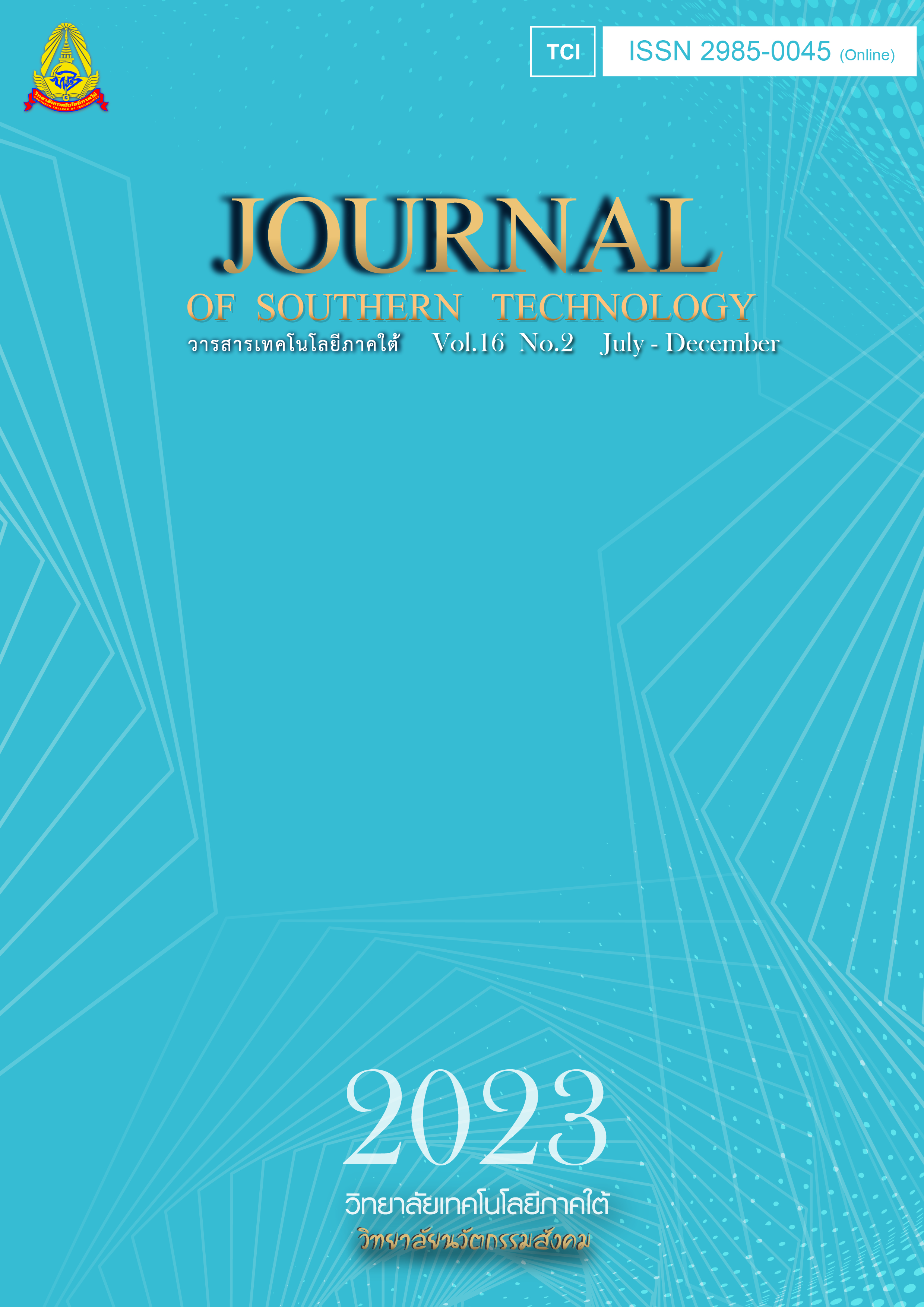Physical Exercise Behaviors of Residents in Mueang Lampang amidst the COVID-19 Pandemic
Main Article Content
Abstract
The COVID-19 pandemic directly affects individuals who engage in sports and physical exercises. In order to protect oneself while exercising, one needs to have proper exercise behavior based on the preventive measures against the COVID-19 as declared and regulated by the government. This survey-based research aims to study: the level of the importance of physical activity behaviors perceived by residents in Mueang District, Lampang Province; and self-preventive measures for engaging in physical activity; and attitudes towards physical exercise that influence their physical activity behaviors during the pandemic. The sample used in this study was 400 individuals who were selected using a simple random sampling method. A questionnaire was used as the research instrument. Statistics employed for data analysis includes percentages, means, standard deviations, correlation coefficients, and multiple regression analysis. The research findings revealed that overall, the public adherence to self-protective measures when having physical exercises was at a high level (=4.16, S.D.=1.10). Interestingly, their attitudes towards physical exercises and exercise behaviors were at the highest level (
=4.44, S.D.=0.63; =4.39, S.D.=0.69; respectively). Results of hypothesis testing revealed that adherence to self-preventive measures and attitudes towards physical exercises significantly influenced their exercise behaviors during the pandemic. Findings of this study serve as guidelines for improving and developing management and promotion of physical exercise activities.
Article Details

This work is licensed under a Creative Commons Attribution-NonCommercial-NoDerivatives 4.0 International License.
-
Authors must agree to the journal publication rules and allow the editors to edit the manuscripts for publication.
-
Author’s right belongs to the author but Journal of Southern Technology holds the right of first publication and thus allow readers to use the article for the purpose of education but not commercial.
References
American College of Sport Medicine. (1995). Guideline for Exercise Testing and Prescription. Baltimore: William and Wikins.
Bandura, A. (1982). Self – efficacy mechanism in human agency. American Psychologist, 37, 122-147.
Chamnoi, P. (2016). The study of knowledge, perception and disease prevention control behaviors level on dengue hemorrhagic fever of public health volunteers case study: Phran Kratai District, Kamphaeng Phet Province. Disease Control Journal, 42(2), 138-150. [in Thai]
Chantuk, T., & Kerddoung, A. (2017). Motivation for health care of the elder, who uses fitness: A case study of sports center honor, culture, sports and tourism Bangkok. The 9th Rajamangala University of Technology National Conference “Creative RMUT and Sustainable Innovation for Thailand 4.0” (pp. 1141-1150). Nakhon Pathom: Rajamangala University of Technology Rattanakosin. [in Thai]
Department of Health, Ministry of Public Health. (2010). Guide to Promoting Healthy Exercise. Bangkok: The War Veterans Organization of Thailand Press. [in Thai]
Holly, R. G., & Shaffrath, J. D. (2001). Cardio respiratory endurance. In American College of Sports Medicine (Ed.), ACSM’s Resource Manual for Guideline for Exercise Testing and Prescription 4th ed., (pp. 449-459). Philadelphia: Lippincott Williams & Wilkins.
Khantabudr, N. (2009). The Development of a Holistic Health Promotion Model for Male Students Upper Secondary Level with Obesity (Doctoral Dissertation). Chulalongkorn University, Bangkok. [in Thai]
Khumrod, W., Poomlittikul, P., Mattavangkul, C., Nualcham, P., Chancharoen, K., Hongkrailert, N., … Ngoamoon, S. (2013). Behavior and Accessibility for Exercise of Pasi Charoen Persons (Research Report). Bangkok: Research center for community development Siam University. [in Thai]
Laemthaisong, J. (2016). Factor Influencing on Preventive Behaviors of Respiratory Tract Infections among Caregivers of Preschool Aged Children in Childcare Center, Bangkok Metropolitan Administration (Master’s Thesis). Community of Nurse Practitioner, Faculty of Nursing Burapha University. [in Thai].
Ministry of Public Health. (2020). Guidelines for Compliance with Measures to Relieve Businesses and Activities to Prevent the Spread of COVID-19 for the Type of Business and Activities Group 3. Retrieved October 28, 2021, from https://ddc.moph.go.th/viralpneumonia. [in Thai].
Nunnally, J. C. (1978). Psychometric Theory (2nd ed.). New York: McGraw-Hill.
Patcharanarumol, W., Lekagul, A., Panichkriangkrai, W., Pilasant, S., Kumdee, C., Prawjaeng, J., & Sumalee, H. (2022). COVID-19: Framework of Strategic Preparedness and Response on Health for Comprehensive Plan. Retrieved January 25, 2022, from http://www.hsri.or.th/researcher/research/new-release/detail/12942. [in Thai]
Pender, N.J., Murdaugh, C.L., & Parson, M.A. (2002). Health Promotion in Nursing Practice (4th ed.). Upper Saddle River, N.J.: Prentice Hall.
Saritvanit, S. (2010). Strategic Management: Concept and Theory. Bangkok: Thammasat University. [in Thai]
Schroeder, M.A. (1990). Diagnosing and dealing with multicollinearity. Western Journal of Nursing Research, 12, 175-187.
Singdamrong, W. (2021). Implementing the Revention and Control of the Coronavirus Disease 2019 Policy in the Case of Entertainment Places on Khaosan Road (Master Independent Study). Bangkok: Siam University. [in Thai]
Silpcharu, T. (2014). Research and Statistical analysis with Spss and Amos. Bangkok: SR Printing Massproducts. [in Thai]
Sribuathong, K. (2021). The relationship between knowledge and attitudes of physical education effect on exercising behavior of teacher and education personnel in school under Krathumbaen. The 8th National Conference of Nakhonratchasima Campus 2021 (pp 920-927). Physical Education Faculty of Education, Thailand National Sports University Chonburi Campus. [in Thai]
Strecher, V.J., Devellis, B.M., Becker, M.H., & Rosenstock, I.M. (1986). The role of self – efficacy in achieving health behavior change. Health Education Quarterly, 13(1), 73-91.
The Royal Institute of Thailand. (2013). The Royal Institute Dictionary, B.E. 2554 (2011) (2nd Printing.) Bangkok: The Royal Institute of Thailand. [in Thai]
Waeputeh, N., Kanchanapoom, K., & Tansakul, K. (2021). Prevention behaviors of coronavirus disease 2019 of Songkhla Rajabhat University Students. Journal of Council of Community Public Health 2021, 3(2), 31-39. [in Thai]
Wongmonta, S. (1999). Marketing Strategies. Bangkok: Diamond in Business Work Press. [in Thai]

